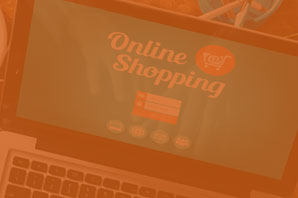Email marketing is one of the most effective ways to reach your audience. Even though email existed long before social media and the web, some business owners tend to overlook it. If you’re wondering what is email marketing and how does it work, get started with email marketing for beginners.
Your customers are overwhelmed with choices when they browse the web and social media. They may discover your brand, but quickly forget as it gets lost in all the noise. When you offer an opportunity to join your email list, you offer the opportunity to start a relationship. Over time, you may turn a subscriber into a loyal customer.
Learning Email Marketing for Beginners
 Email marketing is effective because it is more personal. You reach potential customers directly through their email inbox. When a subscriber opens your email, you have their attention for a few seconds. Only for a few seconds. Many of us scan emails on the go. Your time in front of consumer’s eyes is limited. That’s why a strategy helps your business make emails count in those few seconds.
Email marketing is effective because it is more personal. You reach potential customers directly through their email inbox. When a subscriber opens your email, you have their attention for a few seconds. Only for a few seconds. Many of us scan emails on the go. Your time in front of consumer’s eyes is limited. That’s why a strategy helps your business make emails count in those few seconds.
If you’ve never started real email marketing, it’s easy. Step one is to make a great plan. Sophisticated email list management programs offer the opportunity to plug your list into your sales funnels and set up autoresponders or drip campaigns. Maybe you start with manual emails a few times per month. Depending on your business, these may be transactional emails or just newsletters. The important key is to make a plan for your email marketing. Writing down the plan means you see when you’re hitting goals or missing the mark. Then it’s back to the drawing board.
As you learn more email marketing for beginners, you can increase your email marketing campaign complexity. Take segmentation, for example. Segmentation is the act of separating, emails–in this case, items from a general bucket to be in a more specific bucket. You can segment by any data you have. You also have options to segment your list according to each member’s specific interests. For example, you can differentiate between people who visited your shop and those who joined your list when you ran a social media contest. More on this later. Back to basics…
Email marketing for beginners can be challenging. But, with an email marketing strategy, marketers typically find they have a higher return on investment. Even more so in email marketing than with other forms of online marketing. Also, email marketing fits within a content marketing strategy. So your resources and time will be well strategized.
Now, let’s talk about some of the elements of email marketing.
Avoid Emailing the Spam Folder
The dreaded Spam folder. Your email marketing plan is only effective when your subscribers actually read your email messages. Unfortunately, if enough readers mark your messages as spam you may automatically join the spam folder for other subscribers who use the same email provider. As consumers, we love this law passed for email abusers. The CAN-SPAM Rule is widely acknowledged as the first “must learn” for email marketers.
The first step to avoiding the spam folder is your onboarding process. When a new subscriber joins, try the following:
- Make your onboarding clear and ask for clear consent, such as a confirmation.
- Send a welcome email suggesting that people add your email to their whitelist so your messages go to their inboxes.
- Keep your email messages relevant and on topic. People join your list for a reason, make sure you meet their expectations. For example, if you promise recipes and exclusive invitations to events, be sure to include recipes and exclusive invitations within most of your email messages.
- Include a clear unsubscribe link so it is easy for your subscribers to leave your list. This allows you to focus on the audience that wants to engage with your brand.
- Personalize your messages. (We’ll talk about personalization and open rates in an advanced topic. Don’t worry.)
Email marketing is a challenge to maintain if you’re not prepared. When you start, make sure to be consistent. Publish email newsletters and updates on a regular schedule. Whether that schedule is once a day or once a month. When your subscribers know what to expect from you and how often, that keeps them engaged. If you publish too infrequently, they may forget they even subscribed and send the message to their spam folder.
One final tip to help you avoid the spam folder is to send email messages from a natural looking, personalized account. “No-reply” email addresses are more likely to end up in the spam folder. We recommend doing some A/B testing to see which Sender name works the best.
Next, we need to look at how to build your new email list.

Building Your Email List
Building a new list is one of the biggest challenges in email marketing for beginners. When starting from scratch, building a list may seem daunting. Just remember, you don’t need to build your list in one day. Build it organically and over time. We’ll touch on some basic knowledge in this article but make sure to follow the blog for the next article about building your email list.
Get Started Building Your Email List:
- Create an attractive opt-in offer that fits your ideal audience. For example, a free ebook on a relevant topic may attract your ideal customer and offer a taste of your expertise. If you own a shop, discount codes are another attractive option.
- If you have a brick and mortar business, have a sign-up form on your counter or in high-traffic areas.
- Consider running a contest or promotional giveaway. Use caution as this method may attract the wrong subscribers. Be sure to keep the contest and prize relevant to your ideal audience. Consider a follow-up promotion to keep the non-winners engaged.
- Make it easy to join your list through your website, social media, and in-person. Don’t ask for too many personal details since that decreases the likelihood of your potential subscriber joining your list.
Types of Emails for Marketing
Now, we know this is a lot of information on email marketing for beginners. But, these email marketing tips just touch the surface. We’ll cover more of this in detail later but let’s dive into the types of emails you send for email marketing. Your subscribers are busy, reward them by offering something valuable. Write as if you are talking to one person. Different people respond well to different content. Try a few types of content to see what works best for your customers and subscribers. Some ideas include:
- Informational – let subscribers know about new content and news
- Newsletters – include inspiring or informative articles
- New product information and updates
- Event Invitations
- Co-marketing emails showcasing partnerships with other brands that would interest your customers
- Transactional emails after a subscriber makes a purchase or engages with your brand.
- Lead nurturing email to build the relationship between your brand and the subscriber
Designing Emails
Your email newsletter or content design makes a difference in engagement and conversion.
Strive to use an attractive and easy to read design. Think of the device your subscribers use. Do they use a phone or a laptop? More and more people rely on their phone to check email and browse the internet. Be sure your email is mobile friendly.
Since your subscribers are busy, design for a shorter attention span AKA “busy people.” Use subheadings, lists, and images to make the messages easy to read. Be sure to keep the sentences easy to read and paragraphs short.
Finally, keep your design consistent with your branding. This helps build trust between your brand and your subscribers.
Using Calls to Action in Email
A strong and clear call to action is an often overlooked aspect of email marketing for beginners. Write each email with a clear goal in mind. A strong call to action can sometimes seem a little bossy. Use your introductory text to warm up your reader and prepare them for the CTA.
What action do you hope your message inspires? Once you identify your goal, find an engaging way to ask. Different audiences respond to different approaches. Try A/B testing to find the most effective style for your call to action.
Best Practices for Subject Lines
Your subject line inspires subscribers to either open your email or press delete. Choose an on-topic and clear subject line. It may help to think of it like a newspaper headline. Whatever you do, avoid spammy clickbait style subject lines since they often backfire.
Instead, tell your subscriber how it benefits them to open your email. Consider personalizing the subject line as appropriate for your audience.
Finally, try A/B testing to dial in your email subject lines.
Check the Email Data
After each email, evaluate your results. Most email list management programs offer valuable analytics. Look for the following statistics:
- Open rate — This tells you if your subject lines are on-point.
- Click-throughs — This indicates the effectiveness of your copy, selling proposition, and call to action
- Number of unsubscribes
- Bounce rate — Too high a bounce rate indicates it is time to clean up your list.
- Rate of growth — How often do new people join your list? A slow rate of growth may reveal unattractive opt-in offers or lack of promotion.
Finally, maintain a regular and consistent schedule. Adjust your messages as needed to offer value to your subscribers. Experiment with things like the publication time, format, and the type of content your subscribers appreciate.
Does email marketing for beginners sound daunting? You may want to learn how to do email marketing yourself. When you’re ready. Want to stay on top of more emails in this series? Sign up for the MicroD newsletter to learn more!





